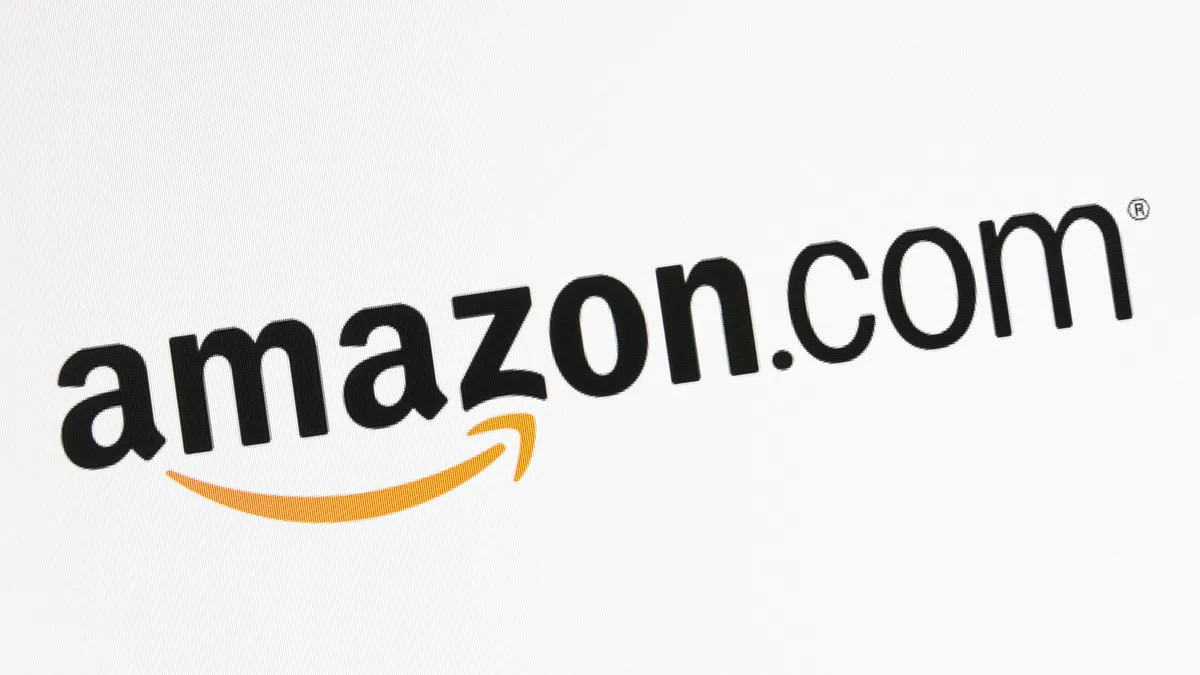Amazon recently won a seven-year battle to quite literally capture the last word in e-commerce.
The Internet Corporation for Assigned Names and Numbers (ICANN), a nonprofit organization that helps manage IP addresses and the internet's domain name system, among other responsibilities, in recent days ruled that Amazon can proceed in its effort to secure the .amazon domain. That would allow the e-commerce giant to develop "generic top-level domains" (gTLDs) like books.amazon or fashion.amazon.
Other brands have secured such domains quite easily, but Amazon's 2012 application has been held up by objections from South American countries including Peru and Brazil stating that, according to ICANN meeting notes, "the name Amazon, in any language, is part of the cultural heritage and identity of the Amazon countries, and that its use as a first level domain name, unless otherwise agreed by the Amazon countries, shall be reserved for the promotion of the interests and rights of the Amazon peoples and their inclusion in the information society."
According to ICANN, plenty of time was allowed for the negotiations between those countries and the company, which have now been exhausted, so "there is no public policy reason for why the .AMAZON applications should not be allowed to proceed in the New gTLD Program." In an email to Retail Dive, an Amazon spokesperson didn't elaborate on its plans for any new possible domains. "We welcome and appreciate ICANN's decision to continue processing Amazon's applications for the .AMAZON Top-Level Domain," the spokesperson said.
Unclear advantage
While Amazon has prevailed in this effort to personalize high-level domains, and observers say new URLs could appear within a few weeks or months, it's not yet clear how useful or influential they might be. Some experts say they could give Amazon a clear advantage, especially against Google, while others think that opportunity may have passed.
"It gives Amazon more control from a branding perspective but I don't see it impacting much else or changing how consumers shop," Oweise Khazi, senior principal at Gartner L2, told Retail Dive in an email. "Shoppers can already access Amazon directly by keying in amazon.com and the product they are looking for. It's another path to the platform for consumers but wouldn't really drive incremental purchases or give Amazon any real retail advantage."
Pat Reinhart, VP of Digital Strategies with e-commerce marketing firm Conductor, sees it as an outdated concept that won't work in an established e-commerce environment and is poised to only drag down Amazon's business.
"The branded TLD's are so bizarre to me and I don't understand why any brand would ever consider using one," he told Retail Dive in an email. "We have trained the general public to go to yoursite.com, not yourproduct.yourbrand for the entire existence of the internet, so why any brand would consider this right now is beyond me."
But, used judiciously and in a targeted way, specific Amazon domains could help the e-commerce giant streamline what can be a somewhat chaotic platform, according to Fahim Naim, a former category manager at Amazon and now founder and CEO of e-commerce growth consulting firm eShopportunity.com. Amazon's URLs contain a jumble of characters, and landing pages that it dedicates to special events or categories can be extremely difficult to find, he said.
"E-commerce is all about making it as easy as possible and this is a huge opportunity for Amazon to maximize that."

Fahim Naim
CEO, eShopportunity.com
"Why are their URLs so funky in the first place? Maybe it's because they figured that nobody's coming in this way, that they're coming in from search," he told Retail Dive in an interview. "Right now the experience is horrible — you have to go to amazon.com, type in 'black dress' and it can be five minutes into your experience to get what you want. If it was 'fashion.amazon' they could have different branding and it wouldn't have to look like the 'amazon dot com' page. E-commerce is all about making it as easy as possible and this is a huge opportunity for Amazon to maximize that."
The river and the rainforest
The idea of an Amazon domain has been controversial in the countries where the actual Amazon — South America's greatest river and the largest drainage system in the world by volume and basin area — flows. Grabbing it over their objections could feed into an emerging sense that Amazon, with Facebook and Google, has become an overly large tech giant, though experts say discontent over this particular issue will likely mostly reside south of the U.S. border. Still, it could spell trouble for the e-retailer, according to Naim.
"I'm not sure the average U.S. customer is going to care enough, but from a South American perspective, Amazon is fighting with these seven or eight South American countries, you have the foreign minister of Brazil publicly objecting, and Amazon, by the way, just launched in Brazil," he said. "I can imagine that, if you're a Brazilian, throw in the whole angle that they are demeaning the rainforest, you're less likely to consider shopping there. They have to figure out Brazil at some point as they go for global dominance. These markets, especially Brazil, are major markets."
Amazon is already taking a conciliatory tone in the wake of its successful bid, although its statement appears to avoid using the word "Amazon" except to refer to itself. "We recognize and take seriously the concerns of the Amazonia regional governments regarding its use," an Amazon spokesperson told Retail Dive in an email. "Amazon looks forward to working with those governments to implement our proposed Public Interest Commitment to protect the culture and heritage of the peoples of the Amazonia region, while allowing Amazon to use the Top-Level Domain in support of our globally recognized brand to surprise and delight our customers."
Winners and losers
The move could be good for Amazon Marketplace sellers, which now account for 58% of goods sold there. But some may lose their prominence in such a shift, or they could face new obstacles or fees to participate, Naim warned. "At a high level, less clicks, higher conversion, higher sales should be good for most sellers," he said. "Right now the fashion page is hard to get to because of all the clicks it takes to get there, but a fashion domain would be better and could be potentially a paid placement. If there's one thing I've learned, if there's a way for Amazon to charge for placement, they will."
It's difficult to know how Amazon's use of any proprietary domains could affect or influence rivals. Naim believes that Google, which now reaps many benefits from consumers searching for goods, even when they look to buy from Amazon, stands to lose the most as consumers find new Amazon domains easy to memorize and navigate. But Gartner L2's Khazi doesn't agree. "Again it gives Amazon a greater control on branding but we don't see many benefits aside from that, and don't anticipate that this will ruffle many feathers at Google," he said.
In fact, Google already has a system in place that undermines any microsite's utility, according to Reinhart. "Google also (for those who may forget) has filters in place for single brands trying to own multiple listings, and unless Amazon is planning on redirecting everything that falls underneath their shoe category to shoes.amazon (which they 100% are not) they would hurt their overall business tremendously from a search perspective," he said.
"This would be a really bizarre experience for customers and I think most of them would think they weren't on Amazon at all, but rather, a site pretending to be Amazon, which would hurt consumer trust in the brand."

Pat Reinhart
VP of DIgital Strategies, Conductor
The move could spur more such applications to ICANN, according to Melissa Burdick, president of e-commerce technology and services agency Pacvue. "Amazon owning their own domain provides them with more control and helps protect their brand. Will it be a trend for other companies to follow? Probably – Amazon often leads and others follow," Burdick told Retail Dive in an email. "Given they have such name recognition, I think it would be easy for people to remember so fallout is potentially minimal. Perhaps they will start a new trend."
While Walmart doesn't seem to have moved to secure its own domain, the retail giant in 2017 did shell out $9 million for the Shoes.com web address when the Canadian retailer that owned it went out of business. French apparel brand Chloe and upscale pen brand Mont Blanc were granted their own domains but have dropped using them, according to U.K. tech publication The Register.
Reinhart believes most such applications are meant to protect ownership and not ever destined to be used, and views ".amazon" as a boondoggle. "This would be a really bizarre experience for customers and I think most of them would think they weren't on Amazon at all, but rather, a site pretending to be Amazon, which would hurt consumer trust in the brand," he said. "Another thing to consider is how would the backend for all of this work? Is Amazon going to move to a multi-storefront model just to utilize weird microsites? There's no way and it would cost a fortune to implement and maintain all of these sites. Their operating costs would go through the roof with all of the different product categories they have."




















